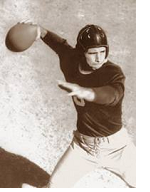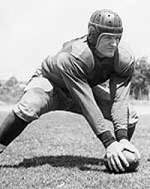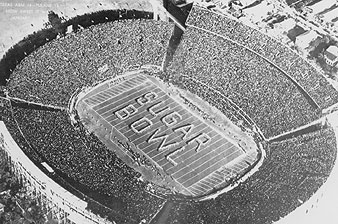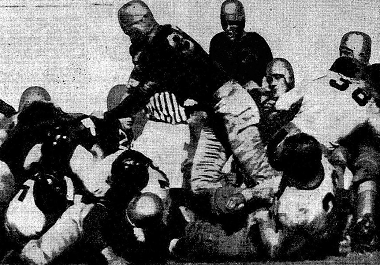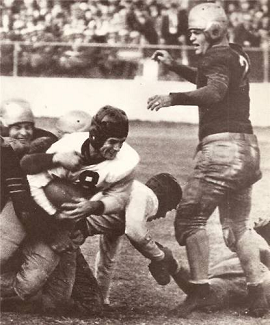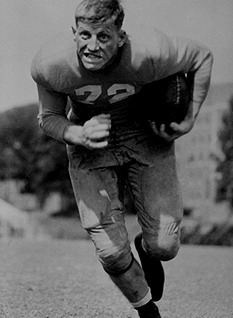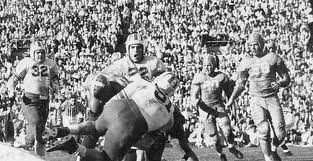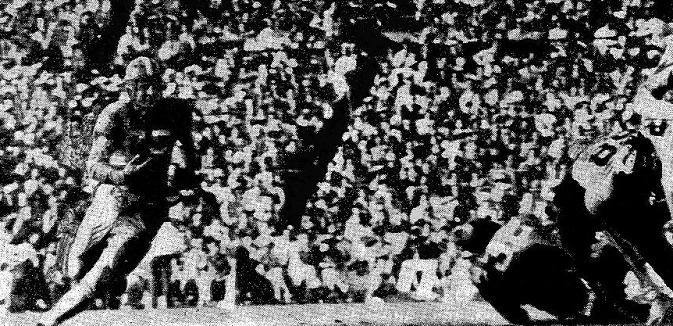
Pictured above is one of many big gains by 11-0 Tennessee in their 17-0 Orange Bowl victory over 10-1 Oklahoma. By any measurable criteria, Tennessee was the best team of 1938, but they wound up #2 in the AP poll. 11-0 Texas Christian, led by national sensation and Heisman Trophy recipient Davey O'Brien


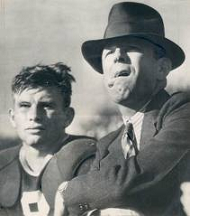 This season
marked the end of Texas Christian's greatest era, 1929-1938, when they
went 89-15-9 and won 3 SWC titles and an MNC.
This season
marked the end of Texas Christian's greatest era, 1929-1938, when they
went 89-15-9 and won 3 SWC titles and an MNC.